Nutritional Deficiency Diseases: 10 Deficiencies & Prevention
Pale skin, brittle nails, and dry skin could be symptoms of nutrient deficiencies.
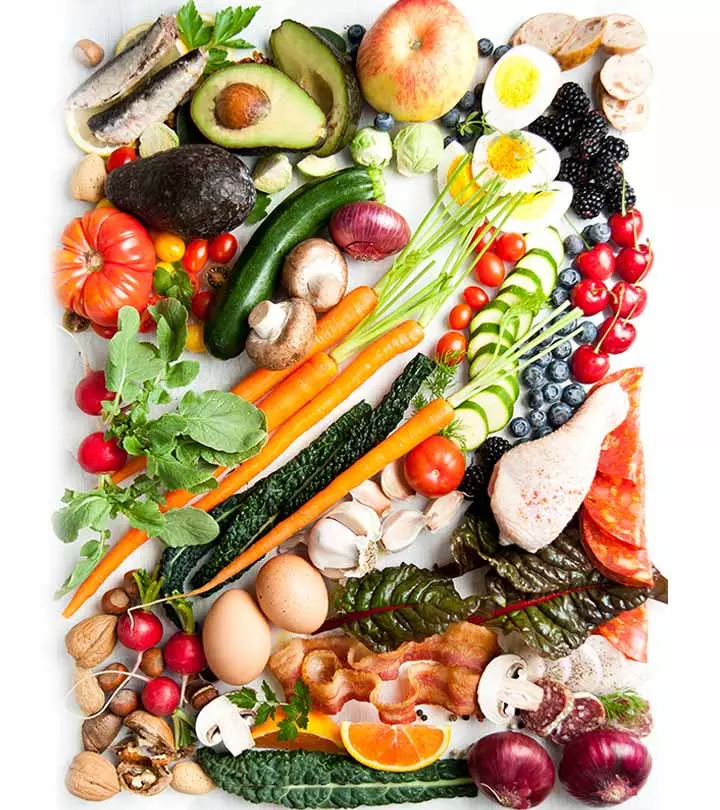
Image: Shutterstock
Nutritional-deficiency diseases contribute to about 20% of deaths worldwide, and they claim more than 678,000 lives in the US alone every year
These staggering numbers are a result of poor dietary patterns. Our diets are devoid of the right nutrients and are replete with the junk our body does not need. In this article, we talk about the 10 most commonly occurring nutrient deficiencies and the best ways to treat and prevent them. Read on!
In This Article
What Is A Nutritional Deficiency?
Your body requires several vitamins and minerals for optimal functioning and disease prevention. These vitamins and minerals are called micronutrients.
A nutritional deficiency occurs when your body doesn’t receive or cannot absorb a specific nutrient in the amount required. If this is prolonged, it can lead to malnutrition. It can weaken the immune system, making people more susceptible to infections and diseases. Malnutrition can also affect cognitive function, energy levels, and quality of life.
Micronutrients cannot be produced by your body. You must acquire them through diet (3). Some very common nutrient deficiencies include vitamin A, iodine, folate, and iron deficiencies, which can have devastating consequences.
These consequences include impaired cognition, coronary artery disease, eye disease, infections, cancer, diabetes, inflammation, obesity, among others (4), (5).
Hence, it is important to prevent deficiencies right in their tracks. One way of doing this is by identifying the common symptoms. These symptoms may include fatigue, paler skin, sleepiness, breathing troubles, heart palpitations, poor concentration, tingling or numbness in the joints, hair loss, and lightheadedness.
The next step is understanding nutrient deficiencies better.

Key Takeaways
- Nutritional deficiencies may lead to fatigue, a weak immune system, and birth deformities.
- Incorporate vitamin and mineral supplements to treat deficiencies.
- Regularly consume fruits, vegetables, and whole grains to avoid nutritional deficiencies.
- Overconsumption of micronutrients may lead to poisoning, hence, one must stick to the correct dosage.
What Are The Most Common Nutrient Deficiencies?
1. Iron Deficiency (Causes Anemia)
You may have iron deficiency anemia if you experience the following symptoms (6):
- Pale skin
- Extreme fatigue
- Brittle nails (also called vitamin deficiency nails)
- Chest pain and shortness of breath (accompanied by fast heartbeat)
- Cold hands and feet
- Tongue inflammation
- Unusual cravings for non-nutritive substances like ice or dirt
- Headache and dizziness
When your body doesn’t have enough iron to produce hemoglobin, you can develop iron deficiency anemia.
Hemoglobin helps in the transport of oxygen throughout the body (7).
According to the WHO (World Health Organization), the global prevalence rate of anemia is 39.8% in children aged 6-59 months. The global anemia prevalence is 29.9% in women aged 15-49 years, 29.6% in non-pregnant women, and 36.5% in pregnant women.
Blood loss is one major cause of an iron deficiency. Women are at a higher risk as they lose blood during menstruation. Even a lack of iron in your diet can lead to this deficiency.
If you have Celiac disease, your body can become deficient in iron. Celiac disease affects your intestine’s ability to absorb nutrients from food, including iron. Iron could be depleted in individuals with celiac disease. Even iron deficiency anemia may complicate existing celiac disease (8).
Vegetarians or vegans, menstruating and pregnant women, and individuals who donate blood more frequently are at an increased risk of iron deficiency (6).
Christine Salus, a health and fitness vlogger, enthusiastically shared her journey of overcoming iron deficiency. She says, “ The reason why I think that my iron levels were still so low in 2019, you know 8 months after leaving veganism, was because I still was eating foods that were irritating my stomach…and I wasn’t eating enough red meat.” She adds that once she removed chocolates and nuts from her diet, her body was able to absorb iron, from the foods she ate, much better. Though this is a restrictive diet, she says that once her gut healed, she started adding a little bit of the restricted foods to her diet. About her current diet, she says, “I basically eat like a bear. I’m like an omnivore bear that eats a lot of fruit, fish, and red meat. All types of animal products really…and certain vegetables (i).”
The best modes of treatment include taking iron supplements and enriching your diet with foods rich in iron. Other methods include intravenous iron or red blood cell transfusions, which are used during severe cases of iron deficiency anemia.
The richest sources of heme iron are lean meat and seafood. Heme iron is the form of iron found in meat, poultry, and seafood – and is more easily absorbed in the body (9).
Sources of non-heme iron include nuts, beans, and vegetables (especially spinach) (10).
One serving of fortified breakfast cereals contain about 18 milligrams of iron, which meets 100% of the daily requirement. Three ounces of pan-fried beef liver contains 5 milligrams of iron, which meets 28% of the daily requirement. Half a cup of boiled spinach contains 3 milligrams of iron, meeting 17% of the daily requirement (10).
Including iron in your diet is simple. You can add spinach to your breakfast sandwich or pasta and soups. If you are more of a meat lover, you can combine 1 pound of ground beef with 1/3 pound of finely chopped beef liver. Add in some garlic powder, onions, salt, and pepper. You can use these to make meatballs.
 Did You Know?
Did You Know?2. Iodine Deficiency (Causes Goiter And Hypothyroidism)
You may have iodine deficiency if you experience the following symptoms (11):
- Goiter, characterizing an enlarged thyroid gland
- Fatigue
- Constipation
- Puffy face
- Muscle weakness
- Dry skin
- Muscle aches and tenderness
- Thinning hair
- Depression
- Impaired memory
- Weight gain
- Increased sensitivity to cold
- Irregular menstrual periods
- Elevated blood cholesterol levels
Iodine deficiency happens when you don’t consume enough iodine through your diet. Women are more likely to develop hypothyroidismi A disorder where the thyroid gland does not generate adequate thyroid hormone, affecting metabolism, heart rate, and body temperature. than men. Other individuals who are more likely to develop this condition include those who had a thyroid problem before, those who had undergone surgery to correct their thyroid problem, and those with a family history of thyroid disease.
Even those who received radiation treatment to the thyroid, neck, or chest, are susceptible. Pregnant women and women, in general, are more likely to be deficient in iodine (11).
The best way to prevent iodine deficiency is to consume foods rich in the nutrient. On a massive scale, salt and bread have been fortified with iodine (12). Iodine supplements are available as well – which you can take once you consult with your healthcare provider.
Seaweed is the richest source of iodine. Just 1 gram of seaweed contains 16 to 1,984 mcg of iodine, meeting 11% to 1,989% of the daily requirement. Three ounces of baked cod contains 99 mcg of iodine, which meets 66% of the daily requirement. One cup of plain low-fat yogurt contains 75 mcg of iodine, meeting 50% of the daily requirement of the nutrient (13).
You can have a cup of low-fat yogurt as a quick evening snack. You may also add powdered seaweed (called spirulina) to your evening smoothie.
You may also want to check your selenium intake as it is strongly linked to serum iodine concentrations. Selenium has an important role to play in the synthesis and metabolism of thyroid hormone (14).
Including Brazil nuts in your diet can help boost selenium levels. Be wary of overconsumption, though. They could cause selenium toxicity if consumed regularly (14).
3. Vitamin A Deficiency (Causes Night Blindness)

You may have vitamin A deficiency if you experience the following symptoms (15):
- Dry and scaly skin
- Dry eyes
- A hazy cornea
- Inflamed eyes
- Night blindness
Lack of adequate dietary intake is the biggest cause of vitamin A deficiency. People in locations where rice is the staple food can also experience symptoms – given that rice is devoid of beta-carotene.
Certain health conditions like celiac disease, chronic diarrhea, cystic fibrosisi A fatal hereditary condition that causes mucus buildup to harm the digestive tract and lungs. , and cirrhosis can interfere with the absorption of vitamin A in the body (15).
Infants, children, and pregnant and lactating women are at a higher risk of developing vitamin A deficiency. Individuals with cystic fibrosisi A fatal hereditary condition that causes mucus buildup to harm the digestive tract and lungs. are also at a higher risk (16).
Oral vitamin A could be a promising way of treating the deficiency, especially if the symptoms are severe or malabsorption is the cause. These may also include beta-carotene supplements. However, do keep in mind that beta-carotene supplements have been associated with an increased risk of certain cancers (15).
Vision loss caused by scarring is an exception and cannot be reversed through supplementation (17). Hence, it is better to avoid such a vitamin deficiency by ensuring you consume adequate vitamin in your diet.
Sweet potato is the richest natural source of vitamin A. One whole baked sweet potato contains 28,058 IU of vitamin A, which meets a whopping 561% of the daily requirement.
Beef liver is another great source – 3 ounces of pan-fried liver offers 22,175 IU of vitamin A, meeting 444% of the daily requirement (16). Half a cup of boiled spinach offers 11,458 IU of vitamin A, and this meets 229% of the daily requirement (16).
You can include sweet potatoes in your diet by making them a go-to side dish for poultry or meat dishes. You may also mash sweet potatoes and have them with a delicious combination of high-quality goat cheese. Spinach makes for a great addition to your breakfast sandwich.
4. Vitamin B-Complex Deficiency
is a combination of all the B vitamins. A deficiency in any of these can cause problems.
A deficiency of vitamin B1 (thiamine), or thiamin deficiency, causes beriberi. Beriberi is characterized by impaired sensory, reflex, and motor functions. It may also lead to congestive heart failure, causing edema in the lower limbs, and in certain cases, even death (18). Individuals who consume alcohol, have diabetes, older adults, and those who have undergone bariatric surgeryi A set of procedures that decreases the quantity of food you can consume and absorb while also altering your digestive system to aid weight loss. are at a higher risk.
It can also lead to riboflavin deficiency or Vitamin B2 deficiency that causes fatigue, swollen throat, blurred vision, and depression. (19)
Vitamin B3 or niacin deficiency causes pellagra. This condition is characterized by diarrhea, dementia, and sun-sensitive dermatitis. If left untreated, pellagra can lead to death (20).
A deficiency of vitamin B7, or biotin, causes thinning of hair and rashes around the eyes, nose, and mouth. It may also cause skin infections and, in rare cases, seizures (21).
Vitamin B12 deficiency (also called cobalamin) can cause tiredness, loss of appetite, weight loss, constipation, and nerve issues. Other symptoms can include depression and confusion (22).
Folate is another B-complex vitamin whose deficiency can cause serious complications. Symptoms include weakness, difficulty in concentrating, and shortness of breath. It can also lead to gastrointestinal issues (23).
In women, folate deficiency increases the risk of giving birth to infants with neural tube defects. Inadequate maternal folate status can also cause low infant birth weight, preterm delivery, and retardation of fetal growth (23).
Individuals with alcohol use disorder and pregnant women (or those of childbearing age) are at risk of folate deficiency.
Foods rich in B vitamins include fortified cereals, pork chops, lean beef, tuna, eggs, and boiled spinach (18).
5. Vitamin C Deficiency (Causes Scurvy)
You may have a vitamin D deficiency if you experience the following symptoms (24):
- Depression
- Fatigue
- Rashes
- Impaired wound healing
- Gingivitis
- Weight loss
- Irritability
- Scurvy (characterized by bleeding gums and opening of previously healed wounds)
The primary cause of scurvy is the inadequate intake of vitamin C. Individuals at high risk include people who addicted to alcohol and smoking, those on a poor diet, and those having severe mental illness. Even people undergoing dialysis are at risk as vitamin C is lost in the treatment process (25).
Treatment usually involves a heavy dosage of vitamin C regularly (26).
Replenishing your diet with foods rich in vitamin C also helps. A three-fourth cup of orange juice contains 93 mg of vitamin C, meeting 155% of the daily requirement. A medium orange contains about 70 mg of the vitamin, meeting 117% of the daily requirement (27). Other sources include broccoli, potatoes, and cauliflower.
Having an orange a day should take care of your vitamin C needs. You may toss broccoli, potatoes, and slices of orange in your evening salad.
6. Vitamin D Deficiency (Causes Rickets and Osteomalacia)

You may have vitamin D deficiency if you experience the following symptoms (28):
- Bone pain
- Generalized weakness
- Myalgia (pain in a group of muscles)
The deficiency is caused by several reasons, which can also be the risk factors. Some of these include limited exposure to sunlight, having dark skin, or having inflammatory bowel diseasei A spectrum of illnesses that lead to gastrointestinal pain and swelling from chronic inflammation. or other conditions that cause malabsorption of the nutrient (29).
Vegans and vegetarians may also be at high risk as most of the natural food sources of vitamin D include fish, dairy, and poultry.
Treatment for vitamin D deficiency may include oral supplementation of 50,000 IU of vitamin D2 per week for eight weeks (30).
Adding the right foods to your diet (apart from regular exposure to morning sun) is the best way to prevent vitamin D deficiency.
Three ounces of cooked salmon contains 447 IU of vitamin D, which meets 112% of the daily requirement. Three ounces of canned tuna fish contains 154 IU of the vitamin and meets 39% of the daily requirement (31). Other good sources include milk, yogurt, eggs, and beef liver.
You can have canned tuna for breakfast or include eggs and milk in your meals. If you are a vegetarian, go for orange juice fortified with vitamin D (check the label). One cup of fortified orange juice contains 137 IU of vitamin D and meets 34% of the daily requirement (31).
7. Calcium Deficiency (Causes Hypocalcemia)
You may have calcium deficiency if you experience the following symptoms (32):
- Confusion
- Fatigue
- Anxiety
- Brittle nails
- Impaired concentration
- Poor memory
- Dry skin
- Coarse hair
- Alopecia
- Muscle cramps and muscle weakness
Hypocalcemia may be caused by several factors. These include inadequate calcium in the diet, lack of sunlight exposure, chronic kidney disease, liver disease or liver cirrhosisi Liver failure brought on by inflammation or long-term alcohol consumption, resulting in scarring and severe liver damage. , and reduced intestinal absorption of calcium (32). Vitamin D deficiency can also lead to hypocalcemia (33).
Individuals at risk of calcium deficiency include postmenopausal women, individuals with lactose intolerance, and vegetarians (34). Treatment for hypocalcemia usually involves oral calcium and vitamin D in the form of supplements (35).
Plain, low-fat yogurt is the richest source of calcium. Eight ounces of the yogurt contains 415 milligrams of calcium, meeting 42% of the daily requirement. Eight ounces of non-fat milk contains 299 milligrams of calcium, meeting 30% of the daily requirement (34).
Calcium-fortified orange juice is another good option. Make sure you check the labels. Six ounces of the juice contains 261 milligrams of calcium, meeting 26% of the daily requirement (34).
8. Magnesium Deficiency (Causes Hypomagnesemia)
You may have magnesium deficiency if you experience the following symptoms (36):
- Vomiting
- Nausea
- Fatigue
- Weakness
- Loss of appetite
- Numbness
- Seizures
- Abnormal heart rhythms
- Tingling
- Muscle cramps
The primary cause of magnesium is dietary inadequacy. Malabsorption could also be another cause. Excess alcohol intake and prolonged diarrhea may also cause magnesium deficiency (37).
People at high risk of this deficiency include those who are addicted to alcohol, individuals with diabetes or gastrointestinal issues, and older adults (35).
Taking magnesium by mouth is the most common form of treatment (38).
Severe magnesium deficiency may also lead to the deficiency of calcium or potassium (given the disruption of mineral homeostasis), leading to further problems (36). Homeostasis is the state of stable equilibrium or balance.
Including foods rich in magnesium in your diet is the best way to prevent this deficiency. Nuts are among the richest sources of magnesium. One ounce of dry roasted almonds (23 grams) contains 80 milligrams of magnesium, meeting 20% of the daily requirement. A similar quantity of dry roasted cashews contains 74 milligrams of magnesium, meeting 19% of the daily requirement (36). Other sources include spinach, peanuts, and brown rice.
You can incorporate almonds or cashews into your evening salad or sprinkle them over your smoothie. You may also replace white rice with brown rice in your rice preparations.
9. Zinc Deficiency
You may have zinc deficiency if you experience the following symptoms (38):
- Loss of appetite
- Weakened immune system
- Hair loss
- Diarrhea
- Lethargy
- Slow wound healing
- Unexplained weight loss
Alcoholism is one major cause of zinc deficiency. Other causes include chronic kidney disease, diabetes, liver or pancreas disorders, and sickle cell disease (38).
Individuals at a higher risk include those addicted to alcohol, vegetarians, individuals with gastrointestinal issues, and pregnant or lactating women (39). Tansy Rodgers, a Functional Nutritional Therapy Practitioner, says, “It’s an important nutrient for muscle healing and repair, but it is also a cofactor for several enzymes and it helps influence gut microbiota to create a stronger gut.”
Treatment for zinc deficiency may involve the intake of zinc supplements. Intake of foods rich in zinc works wonderfully well too.
Oysters are the richest sources of zinc. Three ounces of cooked and fried oysters contains 74 milligrams of zinc, meeting 493% of the daily requirement. Three ounces of cooked crab contains about 6.5 grams of zinc, which meets 43% of the daily requirement. Baked beans and pumpkin seeds are also good sources of zinc (39).
You can add cooked oysters to pasta dishes to up your zinc intake. You may also add them to seafood soups and stews. Vegetarians can add baked beans or pumpkin seeds to their evening vegetable salad. You may also sprinkle them on your dishes.
 Quick Tip
Quick Tip10. Vitamin K Deficiency
You may have vitamin K deficiency if you have these symptoms (40):
- Poor cognitive performance
- Bleeding
- Delayed wound healing
- Osteoporosis
- Cystic fibrosis
The most common cause behind vitamin K deficiency is malabsorption (40). Apart from that, certain medications, like those for cholesterol regulation, may interfere with vitamin K metabolism. Newborns may also experience a deficiency of vitamin K if they receive low amounts of the vitamin from the placenta and breastmilk.
Newborns may be prescribed 1 mg of vitamin K by injection and adults may take at least 75 mg daily through foods and supplements. Some foods rich in vitamin K include kale, lettuce, broccoli, and spinach (40).
We must take good care of our diets. Nutritional deficiencies, if ignored, can lead to life-threatening complications.
We have discussed the risk factors for each of the deficiencies. But on a general level, there are subgroups in our population that are at higher risk.
If you think you belong to any of those groups, you must take preventive measures.
Nutrient Deficiencies – Are You At Risk?

Following are groups of individuals that may be at a higher risk of nutritional deficiencies (41):
- Exclusively breastfed infants
- Adolescents
- Individuals with dark-colored skin
- Premenopausal women
- Pregnant women
- Older adults
- Individuals addicted to alcohol
- Individuals on restrictive diets (like a vegan or gluten-free diet)
- People addicted to smoking
- Obese individuals
- Patients who have undergone bariatric surgeryi A set of procedures that decreases the quantity of food you can consume and absorb while also altering your digestive system to aid weight loss.
- Individuals with inflammatory bowel diseasei A spectrum of illnesses that lead to gastrointestinal pain and swelling from chronic inflammation.
- Patients who have undergone kidney dialysis
- Individuals taking antibiotics, anticoagulants, anticonvulsants, diuretics, among others
Lakshmi Prakash, a blogger, stressed the importance of getting tested for nutrient deficiencies rather than self-diagnosing based on symptoms. She writes, “If you seem to be experiencing a few of these symptoms for weeks or months at a stretch, that is certainly abnormal, then you better get your vitamin B-12, vitamin D and iron levels tested (ii).” She cautioned against self-diagnosis, adding, “If you self-diagnose wrongly or take medicines or supplements without knowing what your problem really is, you could end up wasting time and money.”
If you fall into any of these groups, please visit your doctor and take immediate help. Your healthcare provider might recommend certain tests and medications. Do follow their advice.
Individuals in these high-risk categories should consider regular nutritional assessments and dietary consultations. A registered dietitian can provide personalized guidance which can help:
- Identify and address any micronutrient deficiencies through supplements or fortified foods.
- Ensure you are consuming a balanced diet that meets your nutritional needs.
Individuals in high-risk groups can reduce the negative consequences of nutrition deficiency by taking proactive steps to address it.
Dietary supplements are often recommended to treat certain nutritional deficiencies. Certain experts suggest taking them along with a balanced diet. But the science of supplements still appears ambiguous to some extent.
What Is The Role Of Health Supplements?
If you are not eating a variety of nutritious foods, it is time to start now. But if your lifestyle doesn’t allow you access to good nutrition at all times, you may use dietary supplements as they might be effective.
However, it is important to note that supplements cannot replace the variety of foods that are important for a healthy diet (42). You must consult your healthcare provider or a certified nutritionist for the dosages not everyone would need the same dose of supplements. It all depends on one’s health condition.
Scientific evidence shows that some supplements are beneficial for overall health. They can also help manage certain health conditions (42). But never replace your prescribed medications and a balanced diet with dietary supplements.
Do keep in mind that certain dietary supplements may cause some side effects in the initial stages. Hence, it is important to discuss with your nutritionist before you take any supplements.
The quality of supplements that you take plays a vital role. Check for seals of approval by any or all of the following reputed bodies (42):
- US Pharmacopeia
- com
- NSF International
Supplements may help plug dietary gaps. But your first preference must be whole foods (43).
The evidence about the benefits of multivitamins is mixed. It is important to note that the manufacturing of dietary supplements is not monitored by the government in the way the manufacturing of pharmaceutical drugs is (43).
Also, taking supplements you wouldn’t need can lead to side effects and complications. It can lead to a critical problem in nutrition and wellness called overnutrition.
Be Wary – The Dangers Of Overnutrition

Overnutrition happens when the intake of nutrients is oversupplied. The amount of nutrients ingested exceeds that which is required for normal health and metabolism. In a way, overnutrition is the opposite of undernutrition or nutritional deficiencies.
Micronutrient overnutrition happens when you take megadoses of health supplements. Getting an excess of micronutrients from food is rare. But it may happen through supplements if you are not careful.
Micronutrient overnutrition can lead to acute poisoning or chronic issues (44). Please stick to the dosage suggested by your nutritionist or healthcare provider.
Nothing beats a balanced diet. It should consist of a minimum of five servings of fruits and veggies, fiber and grains, dairy, beans, pulses, eggs, meat, fish or other proteins, unsaturated oils, and other healthy fluids like water (45).
Good nutrition starts at an early age. If you can ensure your children have good nutrition, they may not have a deficiency disease.
How To Prevent Nutritional Deficiency Diseases In Your Children
Children’s early eating habits can carry on into adulthood. By the time your child is 7 to 8 months old, you can expose them to a variety of foods apart from breast milk and infant formula. They must get all the nutrients for healthy growth and development. These examples may help (45):
- Fruits: You may introduce bananas, oranges, melons, and strawberries.
- Vegetables: You may start with cooked spinach, peas, sweet potatoes, and carrots.
- Meats: You can expose them to soft and small pieces of lamb, chicken, or fish.
- Whole Grains: You can let them have whole grain bread or pasta.
- Dairy: They can have pasteurized cheeses or yogurt.
- If your child is under 12 months old, please avoid honey, unpasteurized foods or drinks, fortified cow’s milk, fruit juices, and sugary drinks (46).
As they grow older, teach them the importance of a balanced diet and other healthy lifestyle habits. Most importantly, be a role model. Set an example. Your children will learn from you. If you want them to grow up to be healthy adults, be one.
Infographic: A Guide To Nutritional Deficiency – Diseases & Their Symptoms
Nutrients are essential for good health and the proper functioning of the body. They must be obtained from a proper diet and are necessary for tissue formation and regulating chemical processes in the body. When your body does not receive the specific nutrient in the required amounts, it leads to several disorders. Deficiencies in nutrients like iron, iodine, vitamins A, B, C, and D may lead to many diseases such as anemia, hypothyroidismi A disorder where the thyroid gland does not generate adequate thyroid hormone, affecting metabolism, heart rate, and body temperature. , rickets, night blindness, scurvy, and beriberi. Check out the infographic below to learn more about diseases caused by deficiency of specific nutrients and their symptoms. Illustration: StyleCraze Design Team
Following an improper diet with few nutrients can lead to nutritional deficiencies, which, in turn, can impact the disease prevention capabilities of your body. For example, common nutritional deficiencies involving vitamin A, folate, iodine, iron, zinc, magnesium, and calcium can cause impaired cognition and increase the risk of cancer, inflammation, diabetes, and obesity. So, the best way to avoid nutritional deficiency diseases is to identify the symptoms and take remedial actions at the earliest. Fatigue, sleepiness, pale skin, and hair loss are some of the symptoms to look for. If you experience them quite often, consult your doctor immediately.
Frequently Asked Questions
How do you tell what nutrients your body is lacking?
Getting a blood test is one of the best ways to see what your body is lacking. Rodgers adds, “But there are many signs and symptoms that you can look at to lead you in the right direction. For example, if you experience chronically tight muscles, heart arrhythmia, restless legs, or even extreme cravings for chocolate, you may be deficient in magnesium. Or, if you are feeling depressed, super fatigued, losing some of your hair, or have muscle weakness, you could be experiencing low vitamin D.”
How long does it take to fix nutrient deficiencies?
Rodgers says, “That completely depends on the individual and their severity. It also depends on any other health obstacles, such as the leaky gut or mold toxicity, or even parasites. On average, I say that it takes about 1-3 months to correct nutrient deficiencies.”
What is a primary nutritional deficiency?
A primary nutritional deficiency is a condition that mainly occurs because a person does not get enough of certain vital nutrients. Eating foods rich in that nutrient or taking supplements can resolve a primary deficiency.
Why are deficiency diseases caused?
The lack of vital nutrients for a long period, poor nutritional intake, medications, and insufficient consumption of vitamins and minerals may cause deficiency diseases.
Do you feel tired and sluggish? Learn about the 23 signs your body needs more nutrients and how to address these deficiencies from this enlightening video!
Personal Experience: Source
StyleCraze's articles are interwoven with authentic personal narratives that provide depth and resonance to our content. Below are the sources of the personal accounts referenced in this article.
i. I’m NO LONGER IRON DEFICIENT!! How I did it.
https://www.youtube.com/watch?v=QLgQVrsHdf8
ii. Tiredness and Deficiency in Vitamin B-12, Vitamin D, and Iron
https://medium.com/vegan-health-awareness/tiredness-and-deficiency-in-vitamin-b-12-vitamin-d-and-iron-15a2aec5d005
References
Articles on StyleCraze are backed by verified information from peer-reviewed and academic research papers, reputed organizations, research institutions, and medical associations to ensure accuracy and relevance. Read our editorial policy to learn more.
- Health effects of dietary risks in 195 countries, 1990–2017: a systematic analysis for the Global Burden of Disease Study 2017, The Lancet.
https://www.thelancet.com/article/S0140-6736(19)30041-8/fulltext - Why Good Nutrition is Important, Center for Science in the Public Interest.
https://www.cspinet.org/eating-healthy/why-good-nutrition-important - Micronutrient Facts
https://www.cdc.gov/nutrition/features/micronutrient-facts.html?CDC_AAref_Val=https://www.cdc.gov/nutrition/micronutrient-malnutrition/micronutrients/index.html - Cognitive effects of nutritional deficiency, Advances in Nutritional Research, US National Library of Medicine, National Institutes of Health.
https://pubmed.ncbi.nlm.nih.gov/3913300/ - Micronutrients in health and disease, Postgraduate Medical Journal, US National Library of Medicine, National Institutes of Health.
https://www.ncbi.nlm.nih.gov/pmc/articles/PMC2585731/ - Iron deficiency anemia, MedlinePlus, US National Library of Medicine.
https://medlineplus.gov/ency/article/000584.htm - The multiple functions of hemoglobin, Critical Reviews in Biochemistry and Molecular Biology, Taylor & Francis Online.
https://www.tandfonline.com/doi/abs/10.3109/10409239509085142 - Iron deficiency anemia in celiac disease, World Journal of Gastroenterology, US National Library of Medicine, National Institutes of Health.
https://pubmed.ncbi.nlm.nih.gov/26309349/ - Absorption of heme iron, Seminars in Hematology, US National Library of Medicine, National Institutes of Health.
https://pubmed.ncbi.nlm.nih.gov/9460807/ - Iron, National Institutes of Health.
https://ods.od.nih.gov/factsheets/Iron-HealthProfessional/#h3 - Hypothyroidism, National Institute of Diabetes and Digestive and Kidney Diseases.
https://www.niddk.nih.gov/health-information/endocrine-diseases/hypothyroidism - Prevention of iodine deficiency, Prevention of Micronutrient Deficiencies, US National Library of Medicine, National Institutes of Health.
https://www.ncbi.nlm.nih.gov/books/NBK230108/ - Iodine, National Institutes of Health.
https://ods.od.nih.gov/factsheets/Iodine-HealthProfessional/ - Selenium, National Institutes of Health.
https://ods.od.nih.gov/factsheets/Selenium-HealthProfessional/ - Vitamin A Deficiency, Merck Manuals.
https://www.merckmanuals.com/professional/nutritional-disorders/vitamin-deficiency-dependency-and-toxicity/vitamin-a-deficiency?autoredirectid=24803 - Vitamin A, National Institutes of Health.
https://ods.od.nih.gov/factsheets/VitaminA-HealthProfessional/ - Vitamin A deficiency diagnosis and treatment, American Academy of Ophthalmology.
https://www.aao.org/eye-health/diseases/vitamin-deficiency - Thiamin, National Institutes of Health.
https://ods.od.nih.gov/factsheets/Thiamin-HealthProfessional/ - Riboflavin Deficiency, National Library Of Medicine
https://www.ncbi.nlm.nih.gov/books/NBK470460/ - Niacin, Oregon State University.
https://lpi.oregonstate.edu/mic/vitamins/niacin - Biotin, National Institutes of Health.
https://ods.od.nih.gov/factsheets/Biotin-Consumer/ - Vitamin B12, National Institutes of Health.
https://ods.od.nih.gov/factsheets/VitaminB12-Consumer/ - Folate, National Institutes of Health.
https://ods.od.nih.gov/factsheets/Folate-HealthProfessional/ - Vitamin C, Merck Manual.
https://www.merckmanuals.com/professional/nutritional-disorders/vitamin-deficiency-dependency-and-toxicity/vitamin-c-deficiency?autoredirectid=24803 - Skin findings associated with nutritional deficiencies, Cleveland Clinic Journal of Medicine.
https://www.ccjm.org/ - Vitamin C deficiency, National Center for Biotechnology Information.
https://www.ncbi.nlm.nih.gov/books/NBK493187/ - Vitamin C, National Institutes of Health.
https://ods.od.nih.gov/factsheets/VitaminC-HealthProfessional/ - Vitamin D Deficiency in Adults: When to Test and How to Treat, Mayo Clinic Proceedings, US National Library of Medicine, National Institutes of Health.
https://www.ncbi.nlm.nih.gov/pmc/articles/PMC2912737/ - Vitamin D, National Institutes of Health.
https://ods.od.nih.gov/factsheets/VitaminD-HealthProfessional/ - Recognition and Management of Vitamin D Deficiency, American Family Physician.
https://www.aafp.org/pubs/afp/issues/2009/1015/p841.html - Vitamin D, National Institutes of Health.
https://ods.od.nih.gov/factsheets/VitaminD-HealthProfessional/ - Hypocalcemia: diagnosis and treatment, National Center for Biotechnology Information.
https://www.ncbi.nlm.nih.gov/books/NBK279022/ - Hypocalcemia, Merck Manual.
https://www.merckmanuals.com/home/hormonal-and-metabolic-disorders/electrolyte-balance/hypocalcemia-low-level-of-calcium-in-the-blood - Calcium, National Institutes of Health.
https://ods.od.nih.gov/factsheets/calcium-healthprofessional/ - Hypocalcemia, Merck Manual (Consumer version).
https://www.merckmanuals.com/professional/endocrine-and-metabolic-disorders/electrolyte-disorders/hypocalcemia - Magnesium, National Institutes of Health.
https://ods.od.nih.gov/factsheets/Magnesium-HealthProfessional/ - Hypomagnesemia, Merck Manual (Consumer version).
https://www.merckmanuals.com/home/hormonal-and-metabolic-disorders/electrolyte-balance/hypomagnesemia-low-level-of-magnesium-in-the-blood - “Zinc Deficiency” National Center for Biotechnology Information..
https://www.ncbi.nlm.nih.gov/books/NBK493231/ - Zinc, National Institutes of Health.
https://ods.od.nih.gov/factsheets/Zinc-HealthProfessional/ - Vitamin K as a Diet Supplement with Impact in Human Health: Current Evidence in Age-Related Diseases
https://www.ncbi.nlm.nih.gov/pmc/articles/PMC7019739/ - Subpopulations at Risk for Micronutrient Inadequacy or Deficiency, Oregon State University.
https://lpi.oregonstate.edu/mic/micronutrient-inadequacies/subpopulations-at-risk - Dietary supplements: what you need to know, National Institutes of Health.
https://ods.od.nih.gov/factsheets/WYNTK-Consumer/ - “Addressing nutritional gaps with multivitamin and mineral supplements”, US National Library of Medicine.
https://www.ncbi.nlm.nih.gov/pmc/articles/PMC4109789/ - Causes of Malnutrition
https://www.intechopen.com/chapters/81782 - Tips for Healthy Eating for a Healthy Weight
https://www.cdc.gov/healthy-weight-growth/healthy-eating/index.html - Foods and Drinks to Avoid or Limit
https://www.cdc.gov/nutrition/features/good-nutrition-starts-early.html
Read full bio of Alexandra Dusenberry
Read full bio of Ravi Teja Tadimalla
Read full bio of Arshiya Syeda
Read full bio of Aparna Mallampalli










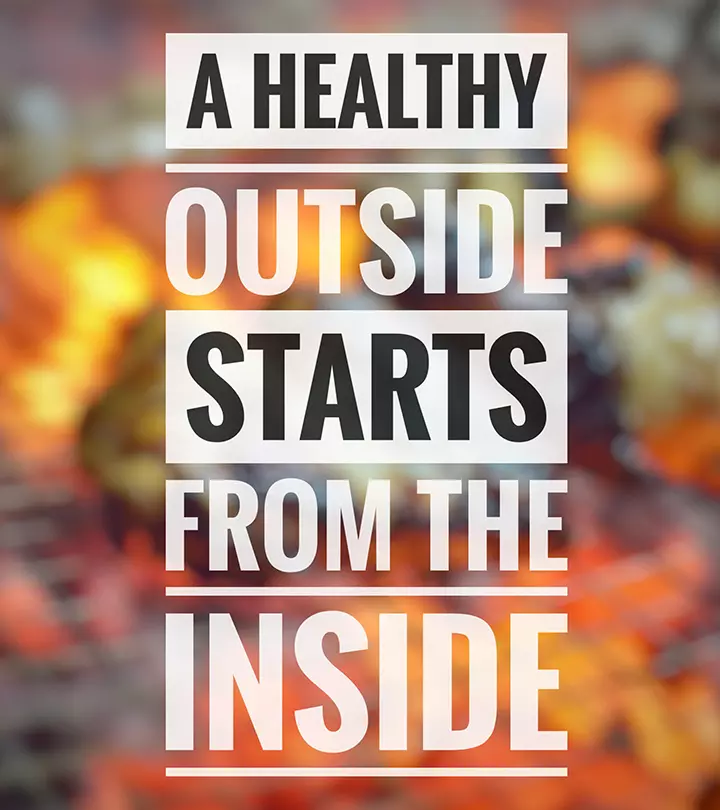

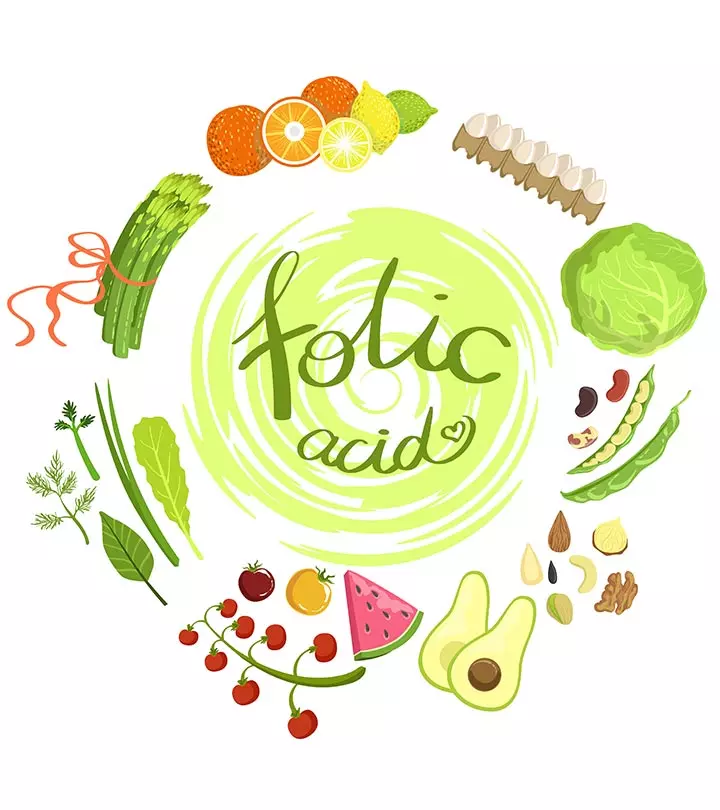





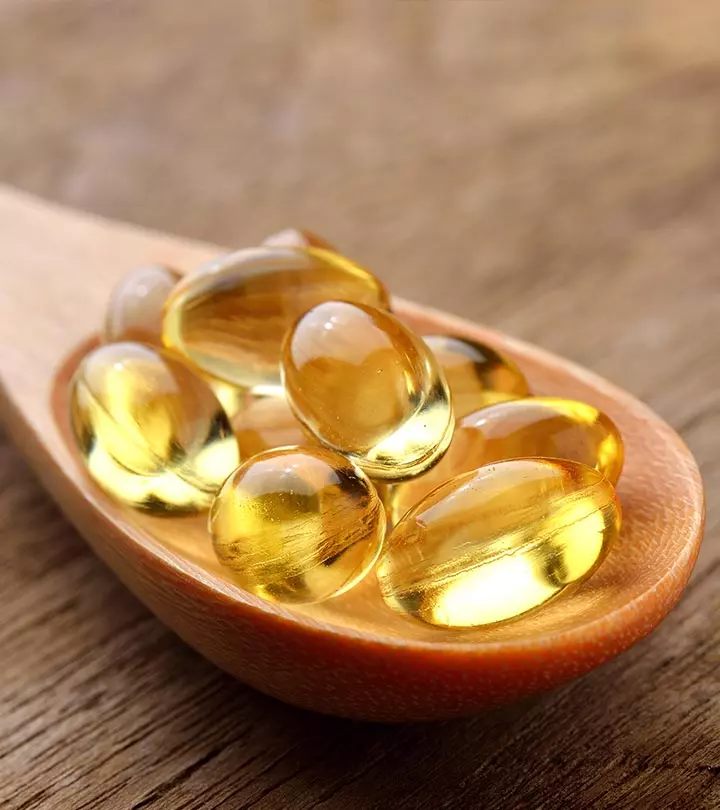



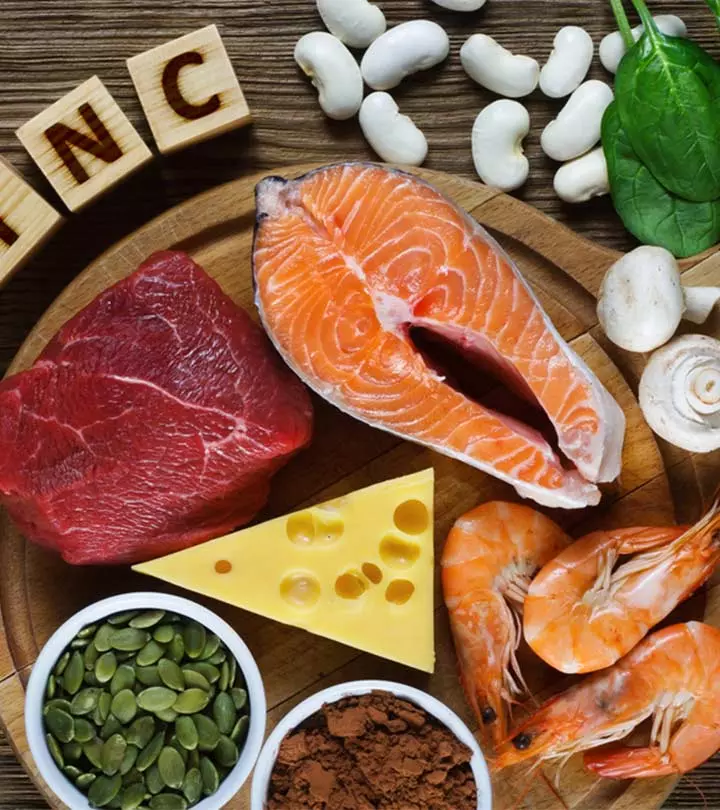
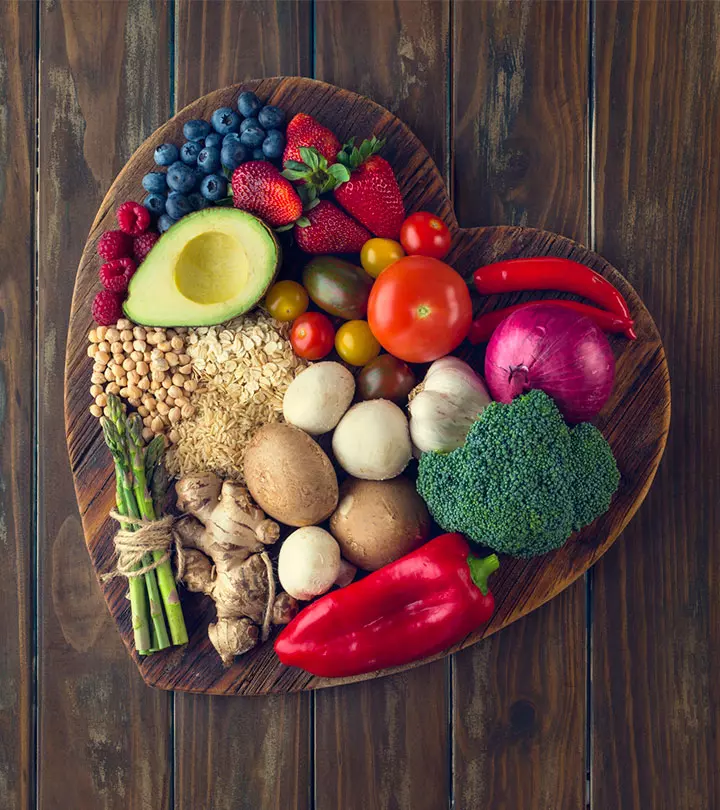




Community Experiences
Join the conversation and become a part of our empowering community! Share your stories, experiences, and insights to connect with other beauty, lifestyle, and health enthusiasts.